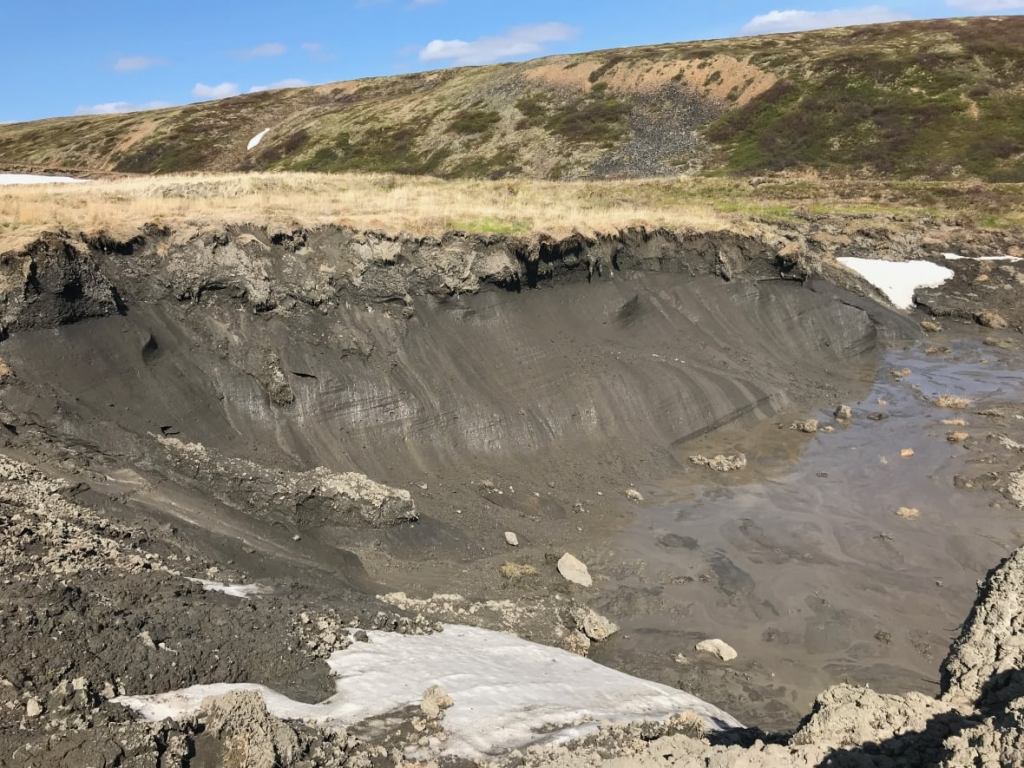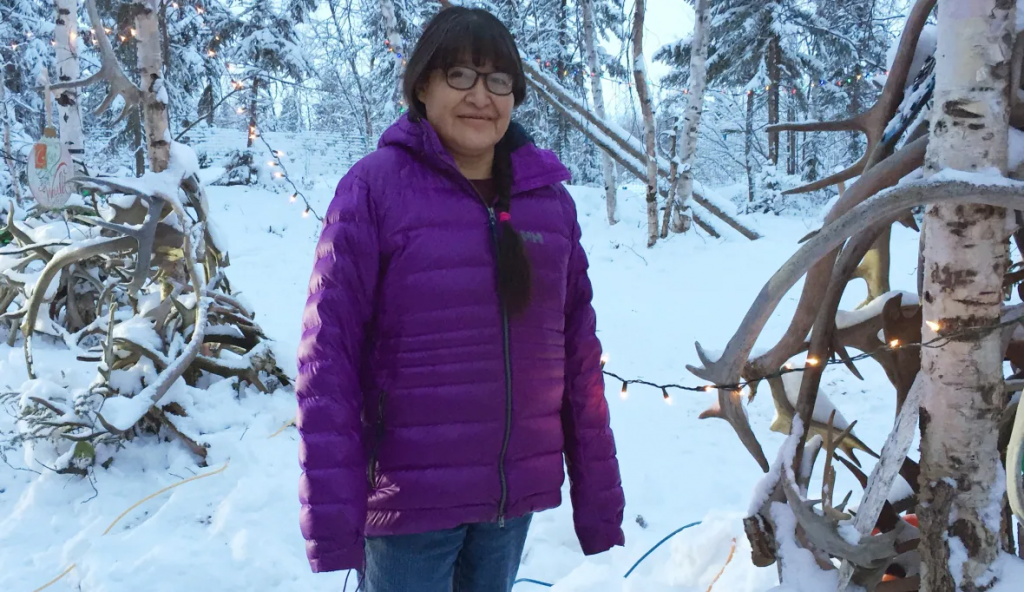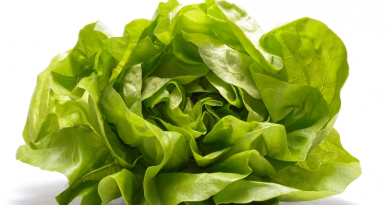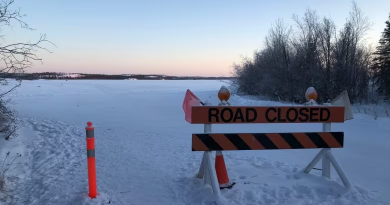The world’s permafrost is rapidly thawing and that’s a big climate change problem

· CBC News
‘They are quite likely to be larger than the fossil fuel emissions from Canada’: U of A associate professor
The Prairies Climate Change Project is a joint initiative between CBC Edmonton and CBC Saskatchewan that focuses on weather and our changing climate. Meteorologist Christy Climenhaga brings her expert voice to the conversation to help explain weather phenomena and climate change and how they impact everyday life.
As we work to curb emissions, another source of greenhouse gases is coming to the surface.
An international study released this fall shows that permafrost thaw could contribute as much greenhouse gases to our atmosphere as a large industrial nation by the end of the century.
In the Arctic, warming is amplified, with annual temperatures having warmed 2.3 C since 1948, more than twice the global rate, according to Environment and Climate Change Canada.
Some reports show that warming is happening even faster.
Warming temperatures and changes in precipitation patterns are factors that can accelerate permafrost thaw.
The amount of emissions from permafrost is directly reliant on how much warmer our atmosphere gets – the higher the degree of warming, the more emissions we can expect.
“It’s like adding another country,” says David Olefeldt, an associate professor at the University of Alberta and co-author of the study.
Based on the study, future emissions by the end of the century range from 55 billion tonnes of carbon in CO2 equivalents under lower emission scenarios, to 232 billion tonnes of carbon under higher emissions, released as carbon dioxide and methane.
To put that in perspective, if Russia, the United States and China were to continue to emit as they did in 2019, they would release 46, 144, and 277 billion tonnes by the end of the century, respectively.
Olefeldt says that in a moderate warming scenario, the greenhouse gas emissions from the permafrost region this century will be equivalent to annual emissions somewhere between that of Russia and the United States.
Carbon below the surface
Permafrost is a thick layer of earth that remains frozen throughout the year.
It begins around a metre below the surface for regions in northern Alberta and Saskatchewan, and the southern N.W.T. and Yukon, but even shallower further north.
The layer of frozen ground reaches depths anywhere from 15 metres below the surface to 700 metres in parts of the western Arctic, and is the product of thousands of years of freezing.
According to Olefeldt, permafrost ground contains a lot of soil carbon – undecomposed plant material that has been accumulating slowly for thousands of years.
“At current there is probably almost twice as much carbon in permafrost ground as there is carbon in the atmosphere as carbon dioxide,” he says.
“So what’s the future of that soil carbon? What happens to it, right?”
Olefeldt says the process is similar to what happens when you take leftovers out of the freezer.
“You put it on your counter and it starts decomposing, and anything that decomposes releases greenhouse gases.”
Olefedt says those emissions can be carbon dioxide or, if the area is near water, methane, a more potent greenhouse gas.
When it comes to this recent study, Olefedt says that there is a level of uncertainty, but that uncertainty has narrowed over the past 10 to 15 years.
Is it too late?
Olefeldt says that emissions from the Arctic are inevitable, and because Canada is the second-largest permafrost country after Russia, those numbers will be significant.
“[Permafrost emissions] are quite likely to be larger than the fossil fuel emissions from Canada, and probably by a factor of, you know, a few times,” he says
That being said, Olefeldt says it is not too late in terms of reducing our own emissions to curb the thaw.
“Any reduction we do in emissions in slowing down climate warming means that we’re going to release less greenhouse gases from the Arctic.”
He also adds that emissions from permafrost won’t be responsible for runaway climate change.
“This is as an accelerator,” he says.
“At the same time, we’re quite certain now that it’s not something that’s so small that we don’t have to worry about it.”
Permafrost and the landscape
The effects of thawing permafrost go beyond emissions and are already clear for those living on the frozen land.
That’s something that Chris Burn, a senior professor in geography at Carleton University, has been studying for over 40 years.
“The current problem, which is climate change, is affecting not the bottom of permafrost, which is way down, it’s affecting what’s happening at the top,” Burn says.
According to Burn, temperature rises have been consistent in the area and have had the biggest impact on permafrost in the Western Arctic in terms of climate change.
“The increase in precipitation is not as clear in the record as the increase in temperature,” he says.
“Precipitation is much more variable from year to year… some years there’s not very much precipitation at all, so then it doesn’t really contribute to thawing of the permafrost.”
Burn said that in years with extreme precipitation, permafrost can thaw quickly as rain infiltrates the ground bringing heat with it.
But despite temperature’s lead role in permafrost thaw, increased Arctic precipitation with climate change is the most short-term problem, according to Burn.
“The water, when it arrives at the surface as rain, it can’t sink into the ground very far… all the spaces in the ground are full of ice.”
That rain gets very quickly into the rivers, allowing them to rise quickly and wash away anything nearby, and increases the risk of landslides.
“Roads characteristically are built near rivers because rivers are in the bottom of the valley and that’s where it’s easy to build a road. So roads get taken out because of more flooding.”
Coastal erosion is also a major concern as the permafrost thaws and sea ice is lost, leading to bigger storms on the coastline.
Burn adds that the warming ground will pose problems for infrastructure as well.
“When there’s ice in the ground, it’ll support whatever’s above it, but when that turns to water, it won’t support it. So then the ground sinks.”
Burn says for a community on thawing permafrost, houses will shift, sewage pipes could break and power poles could tilt over.
“You know, this is something for everybody to be concerned about”.
Living on the ice
“It’s just crazy. Like it’s just unbelievable how it’s changing up here,” says Wanda Pascal.
Pascal is the former Chief of the Tetlit Gwich’in Council, and has lived in Fort McPherson, in the northern part of the Northwest Territories all her life.

She now leads community programs on the land, teaching about traditional food.
“Going over traditional trails, I see all the changes. The water is kind of low. There’s so many willows growing that’s where the water is decreasing,” she says.
“There’s so many slumps, the permafrost is thawing fast.”
Pascal says that travelling out on the land can be challenging with the changes, and sometimes even dangerous.
“There’s more slides up on the mountains, the other day we were passing up in the mountains and there was one hill slide,” she says.
“I do ‘on the land’ programs, we go hiking and even our traditional trails are covered up by landslides. So there’s a lot of stuff that we have to really be careful with”
In town, Pascal says that homes, including hers built in 1992, are being damaged by the thawing permafrost.
“Underneath we have logs holding up our buildings…the pilings are just rotting away, like it’s because of the permafrost melting underneath.”
And roads, like the Dempster Highway, which connects the community to the south through Yukon and north to Inuvik, are becoming impassible at times of the year because of flooding and landslides.
As for the future, Pascal says that her community will have to deal with whatever comes, and with the rapid changes being seen in the north, future generations will have to be prepared.
“There’s not only disasters on the other side of the world, but there’s gonna be disasters here soon.”
Longer term risks
These risks go beyond surface level for the Arctic. Burn says the effects of oil and gas exploration in the 60s and 70s could also come to light in the future.
“All the waste that was created by that activity was dumped into big pits… and the permafrost would keep it from disappearing into the environment,” says Burn.
“The warming’s not gonna stop, so the ground is warming up and as the ground warms up it loses its ability to contain the waste.”
Burn says that in 10-15 years or less, an emerging issue will be whether those areas will remain as a place that can contain waste.
While these issues are a more immediate focus, Burn adds that there is more to think about down the road.
“The long-term problem is associated with things like what happens if the ground really warms up and the tree line moves and and the ecology changes drastically.”
Our planet is changing. So is our journalism. This story is part of a CBC News initiative entitled “Our Changing Planet” to show and explain the effects of climate change. Keep up with the latest news on our Climate and Environment page.
Related stories from around the North:
Canada: ‘Significant’ amounts of mercury in permafrost threatens Arctic food supply, research says, CBC News
Norway: Thawing permafrost melts ground under homes and around Global Seed Vault in Svalbard, The Independent Barents Observer
Russia: 30–50% of critical northern infrastructure could be at high risk by 2050 due to warming, says study, Eye on the Arctic
United States: Alaska villages facing erosion, flooding receive relocation grants, Eye on the Arctic



